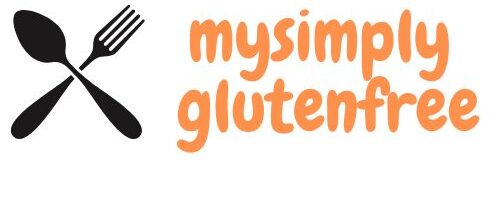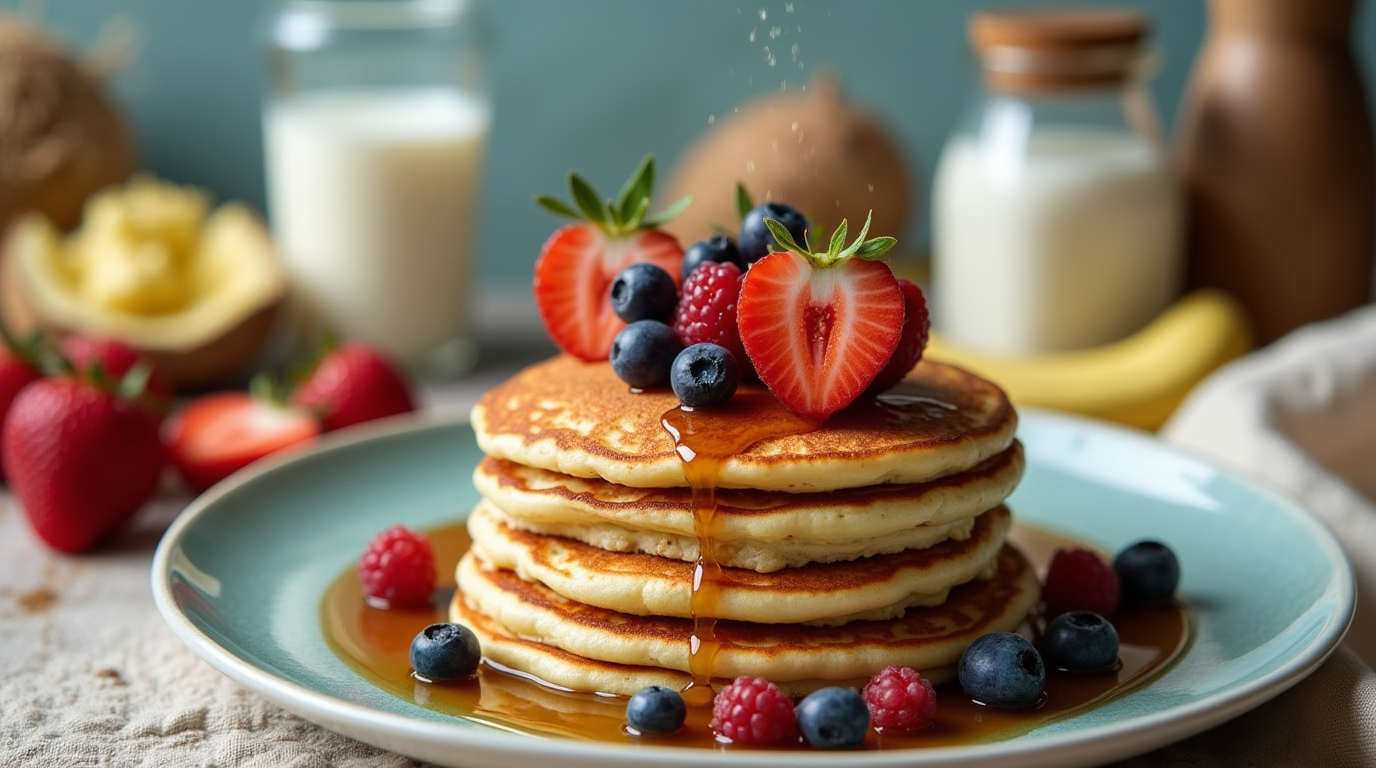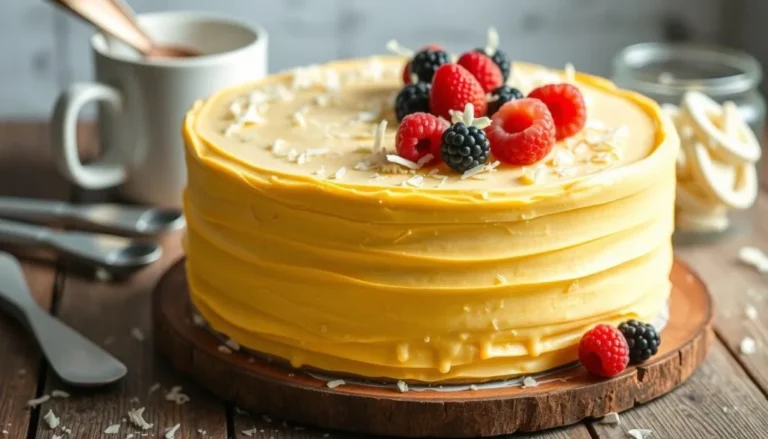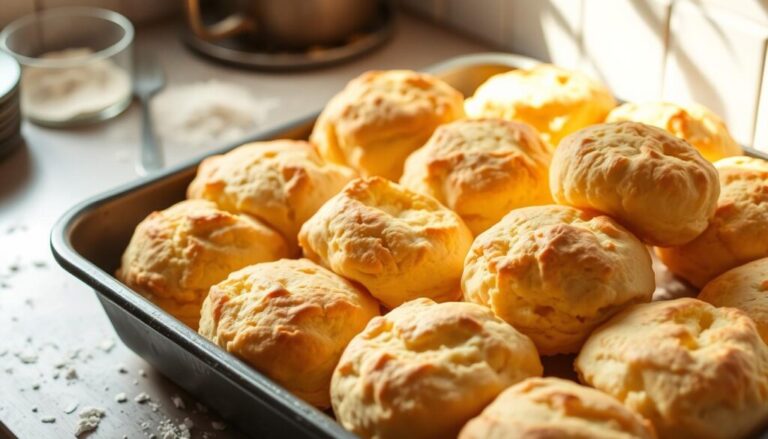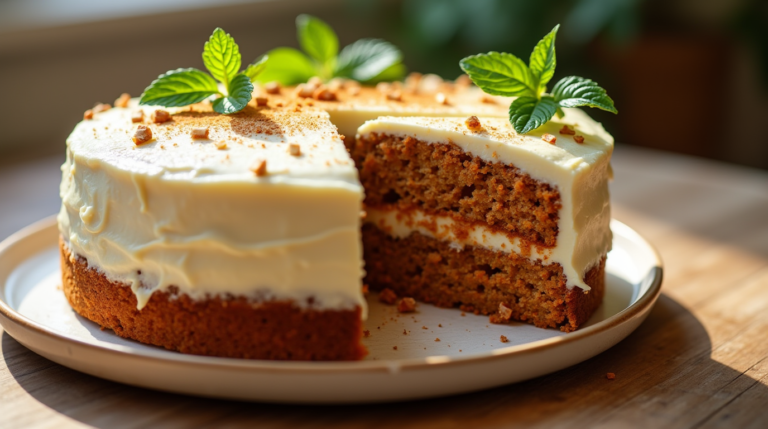Easy Gluten Free Egg Free Recipes for Beginners
Exploring gluten Free Egg Free Recipes can seem daunting. I faced the challenge of changing my kitchen after learning about dietary restrictions. It was tough at first, but then I found joy in creating tasty meals.
It’s not hard to make food that’s both healthy and delicious. Knowing the right recipes can make all the difference. This guide will help you cook gluten and egg free meals that are both tasty and nutritious.
Today, cooking for everyone is easier than ever. This guide will show you how to make amazing dishes that fit any diet. You’ll learn about ingredients and techniques that make gluten and egg free cooking a breeze.
Table of Contents
Understanding Gluten Free Egg Free recipes Cooking Basics
Starting with gluten and egg free recipes can seem tough. This guide will teach you the basics of cooking without common allergens. You’ll make your kitchen safe and tasty for everyone.
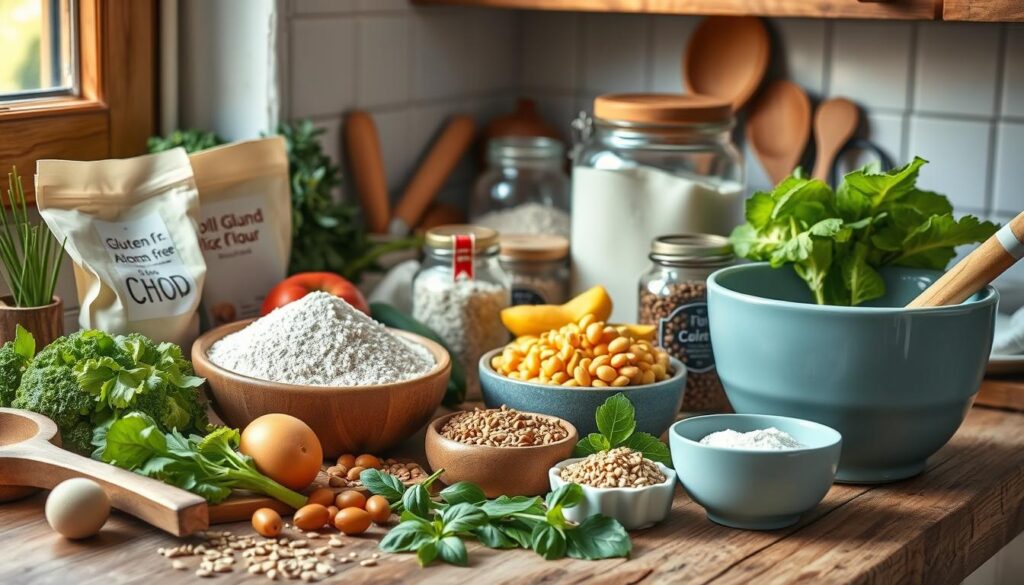
Common Allergens to Avoid
It’s key to know about hidden allergens when cooking gluten and egg free. Many foods have gluten or eggs in them, even if you don’t expect it.
- Gluten sources: wheat, barley, rye, and some oats
- Egg-containing products: mayonnaise, baked goods, some sauces
- Hidden ingredients: malt, modified food starch, protein fillers
“Knowledge is your best defense in creating safe, delicious meals” – Allergy Cooking Experts
Essential Kitchen Tools for Success
To cook safe gluten and egg free meals, you need special tools. These tools help avoid mixing allergens with safe foods.
| Tool | Purpose |
|---|---|
| Dedicated Cutting Boards | Prevent gluten cross-contamination |
| Separate Mixing Bowls | Avoid allergen transfer |
| Color-Coded Utensils | Identify allergen-free cooking tools |
Reading Food Labels Effectively
Learning to read food labels is crucial for safe cooking. Look for phrases that warn of allergens.
- Check for may contain warnings
- Verify ingredient lists carefully
- Look for certified gluten-free labels
- Understand cross-contamination risks
With these tips, you’ll be ready to cook gluten and egg free meals. You’ll make safe and tasty dishes for your family and friends.
Best Egg Substitutes for Allergen-Free Baking
Discovering the right egg substitutes can change your gluten-free and egg-free baking. These ingredients make delicious easy recipes without losing taste or texture.
Exploring egg substitutes, you’ll find many great options. They work well in different recipes:
- Flax Seeds: Create a gel-like mixture perfect for binding
- Chia Seeds: Excellent for adding moisture and structure
- Applesauce: Provides natural sweetness and moisture
- Mashed Bananas: Works great in quick breads and muffins
Knowing each substitute’s special qualities helps you pick the best for your baking.
| Egg Substitute | Best Used In | Ratio |
|---|---|---|
| Ground Flax Seeds | Cookies, Muffins | 1 tbsp + 3 tbsp water |
| Chia Seeds | Breads, Pancakes | 1 tbsp + 3 tbsp water |
| Applesauce | Cakes, Quick Breads | 1/4 cup per egg |
| Commercial Egg Replacer | Most Baked Goods | Follow package instructions |
“Baking without eggs doesn’t mean sacrificing flavor or texture—it means getting creative!” – Professional Baker
Pro tip: Always test egg substitutes in small batches. This helps you see how they affect your recipes. Each substitute adds something special to your allergen-free baking.
Pantry Essentials for Gluten and Egg Free Recipes
Having the right ingredients is key for gluten and egg free recipes. A well-organized pantry makes cooking easy and worry-free. It helps you avoid allergens and dietary restrictions.
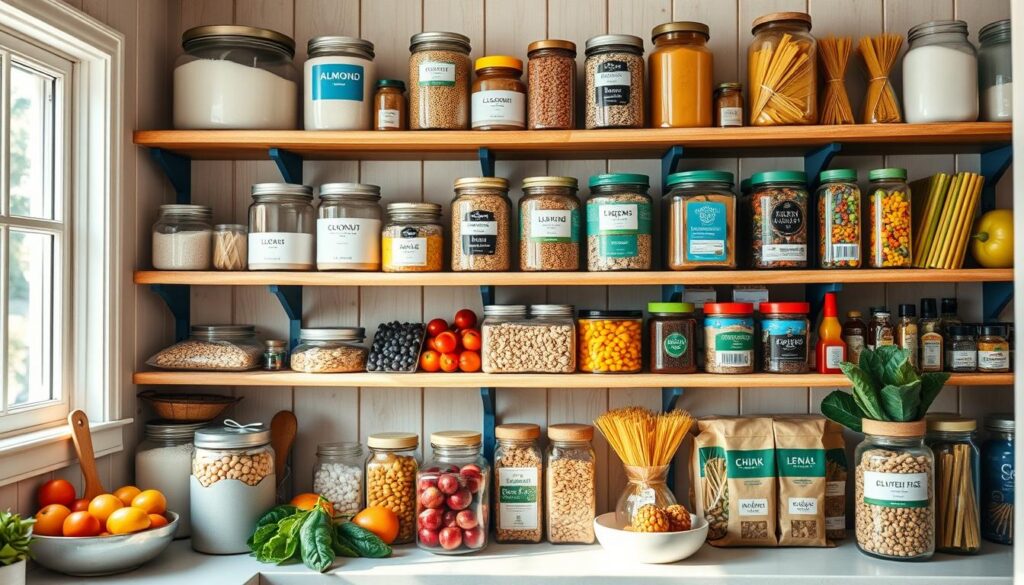
Gluten-Free Flour Alternatives
Exploring gluten-free flours opens up new culinary adventures. Each flour has its own special qualities for your gluten and egg free dishes:
- Almond flour: Nutty flavor, high protein content
- Coconut flour: Extremely absorbent, great for baking
- Rice flour: Neutral taste, versatile in cooking
- Chickpea flour: Protein-rich, excellent for savory dishes
Natural Binding Agents
Without eggs, finding the right substitutes is crucial. Natural binding agents help keep your gluten and egg free dishes together:
| Binding Agent | Best Used In | Ratio |
|---|---|---|
| Chia seeds | Baked goods | 1 tbsp + 3 tbsp water |
| Psyllium husk | Bread, pastries | 1 tsp per cup of flour |
| Xanthan gum | Multiple recipes | 1/4 tsp per cup of flour |
Storage Tips for Ingredients
Proper storage keeps your ingredients fresh and prevents contamination. Airtight containers are your best friend for gluten and egg free pantry items.
“The key to great cooking is great ingredients, stored correctly.” – Professional Chef
- Store flours in sealed glass containers
- Keep binding agents in cool, dry spaces
- Label containers with purchase dates
- Refrigerate nut-based flours to extend shelf life
Quick and Easy Breakfast Options Without Eggs or Gluten
Mornings can be tough when you’re on a gluten and egg free diet. But, there’s good news. Delicious, healthy breakfasts are easy to make. These recipes will make your mornings better, with quick and tasty meals for everyone.
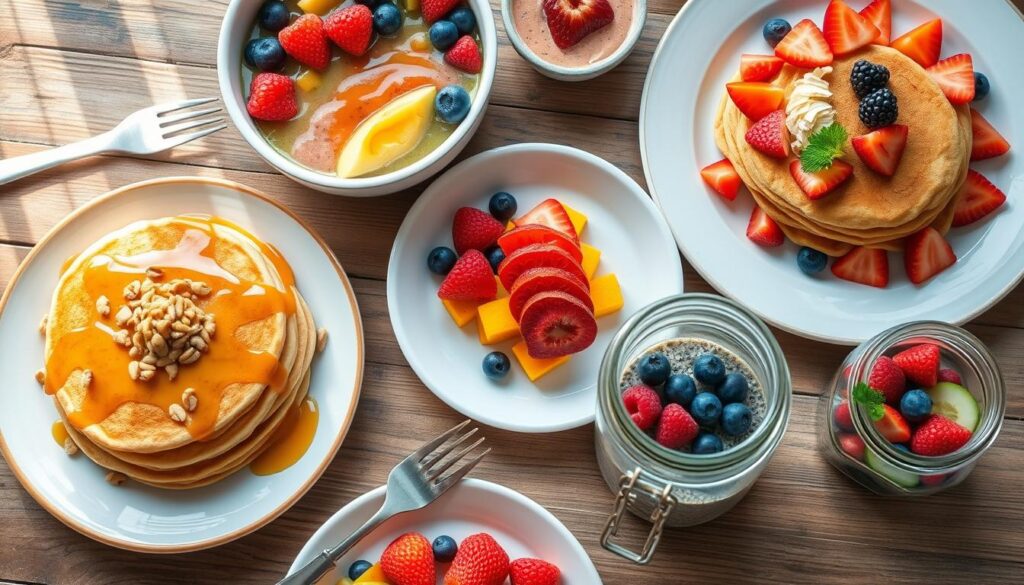
Begin your day with these easy and tasty breakfast ideas. They need little prep:
- Chia Seed Pudding: A creamy, protein-rich breakfast that’s naturally egg-free
- Smoothie Bowls: Full of fruits, nuts, and seeds for a nutritious start
- Quinoa Breakfast Porridge: A protein-rich choice instead of oatmeal
“Eating gluten and egg free doesn’t mean sacrificing flavor or nutrition” – Nutrition Expert
Now, let’s look at some tasty breakfast choices that make mornings fun:
| Breakfast Option | Prep Time | Key Ingredients |
|---|---|---|
| Banana Almond Smoothie Bowl | 10 minutes | Banana, almond milk, chia seeds |
| Coconut Flour Pancakes | 15 minutes | Coconut flour, almond milk, baking powder |
| Berry Chia Pudding | 5 minutes (overnight soak) | Chia seeds, mixed berries, coconut milk |
For those looking for easy recipes that fit dietary needs, these breakfasts are perfect. They’re tasty and simple to make. Your mornings will be transformed!
Simple Lunch and Dinner Recipes for Beginners
Starting with gluten and egg free recipes can seem tough for beginners. But, making tasty meals is easier than you think. Our simple recipes will guide you in making lunches and dinners that everyone will love.
One-Pot Meal Magic
One-pot meals are great for those who are short on time and want to avoid a lot of cleanup. They are easy to make and pack a lot of flavor.
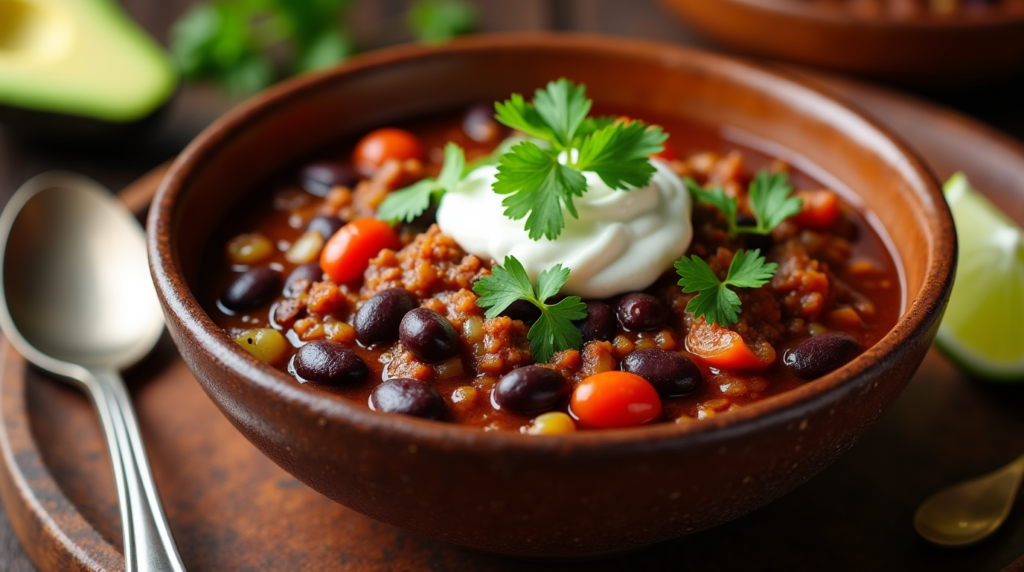
- Quinoa vegetable skillet
- Black bean chili
- Chickpea coconut curry
- Lentil Mediterranean stew
30-Minute Dinner Solutions
Need a quick dinner? These fast meals are both healthy and tasty.
| Recipe | Prep Time | Difficulty |
|---|---|---|
| Zucchini Noodle Stir-Fry | 25 minutes | Easy |
| Stuffed Bell Peppers | 30 minutes | Medium |
| Teriyaki Tofu Bowl | 20 minutes | Easy |
Make-Ahead Meal Strategies
Prepping meals ahead of time saves you time and stress. Batch cooking lets you have healthy meals ready all week.
“Meal prep is the secret weapon for maintaining a healthy, varied diet without daily cooking stress.” – Nutrition Expert
- Roast vegetables in bulk
- Prepare grain bases ahead
- Cook proteins in large batches
- Store in portion-sized containers
Delicious Desserts Without Gluten or Eggs
Craving something sweet but restricted by dietary needs? Gluten and egg free recipes can still deliver mouthwatering desserts that satisfy your sugar cravings. The key is understanding creative egg substitutes and gluten-free baking techniques that transform traditional treats into allergen-friendly delights.
Exploring egg-free desserts opens up a world of delectable options. Some top strategies for creating irresistible sweets include:
- Using mashed bananas as a natural egg replacement
- Incorporating chia or flax seeds for binding
- Experimenting with applesauce in baking recipes
- Utilizing aquafaba for meringue-like textures
Popular gluten and egg free recipes can transform classic desserts into allergen-friendly masterpieces. Consider these innovative ingredient swaps:
| Traditional Ingredient | Gluten-Free Substitute | Egg Replacement |
|---|---|---|
| Wheat Flour | Almond Flour | Mashed Banana |
| Regular Flour | Coconut Flour | Chia Seed Gel |
| White Sugar | Coconut Sugar | Applesauce |
“Dietary restrictions don’t mean sacrificing flavor – they mean discovering new culinary adventures!” – Allergen-Free Baking Expert
Mastering egg substitutes requires practice. Texture and moisture are crucial when replacing traditional ingredients. Experiment with different combinations to find your perfect gluten and egg free dessert recipes that taste just as good as the originals.
From decadent chocolate brownies to creamy cheesecakes, you can craft incredible desserts that everyone will love, regardless of dietary restrictions.
Tips for Successful Gluten-Free and Egg-Free Baking
Starting with gluten and egg free recipes can be tough. Baking without usual ingredients needs special skills. This guide will help you feel confident in allergen-free baking.
For gluten and egg free baking, precision is key. You need to know how to use different ingredients. This lets you make tasty, safe, and fulfilling baked goods.
Temperature and Timing Guidelines
Easy recipes need careful attention to temperature and timing. Gluten-free baked goods often need different baking conditions:
- Reduce oven temperature by 25°F compared to standard recipes
- Check baked goods 5-10 minutes earlier than traditional recipes
- Use an accurate oven thermometer for consistent results
Texture Troubleshooting
Getting the right texture in gluten and egg free recipes can be hard. Look out for these common problems:
- Crumbly texture: Add extra binding agents like xanthan gum
- Dense baked goods: Use lighter gluten-free flour blends
- Dry results: Increase moisture with applesauce or additional liquid
Altitude Adjustments
Baking at high elevations affects gluten and egg free recipes differently. Consider these changes:
- Reduce leavening agents slightly
- Increase liquid content by 2-4 tablespoons
- Decrease sugar by 1-2 tablespoons
“Baking is a science, and gluten-free baking is an art of adaptation.” – Professional Baker
Remember, practice makes perfect. Every recipe you try will help you get better at making gluten and egg free treats. These treats are sure to please everyone.
Meal Planning and Prep Strategies
Learning to plan meals is key for gluten and egg free diets. Good preparation makes cooking fun and easy. It saves time, reduces stress, and ensures tasty meals all week.
“Preparation is the key to success in gluten and egg free cooking” – Professional Nutritionist
Here are top meal planning tips for gluten and egg free recipes:
- Create a weekly meal template
- Batch cook staple ingredients
- Develop versatile base recipes
- Stock a flexible pantry
Your meal prep strategy should be flexible and efficient. Choose gluten and egg free recipes that can change or be used in different ways all week.
| Prep Strategy | Time Saved | Difficulty Level |
|---|---|---|
| Weekend Batch Cooking | 3-4 hours | Medium |
| Ingredient Prepping | 1-2 hours | Easy |
| Freezer Meal Preparation | 2-3 hours | Advanced |
Invest in good storage containers and labels. Organized meal preparation keeps your gluten and egg free cooking smooth. It makes your meals easy to manage and delicious.
Common Mistakes to Avoid When Starting Your Journey
Starting with gluten and egg free recipes can be tough for beginners. Many make big mistakes that affect their cooking and food quality. Knowing these common errors will help you cook allergen-free meals with ease.
Recipe Conversion Challenges
Changing traditional recipes to gluten and egg free needs careful planning. It’s all about understanding how ingredients work together and finding the right egg substitutes.
- Measure ingredients precisely
- Test egg replacements carefully
- Adjust liquid-to-dry ingredient ratios
- Consider texture changes
Cross-Contamination Prevention
Keeping your kitchen free from cross-contamination is key. The setup of your kitchen is very important for safe cooking.
| Prevention Strategy | Action Steps |
|---|---|
| Separate Cooking Surfaces | Use dedicated cutting boards and utensils |
| Kitchen Organization | Label storage containers clearly |
| Cleaning Protocols | Sanitize surfaces between meal prep |
Smart Storage Solutions
Storing gluten and egg free ingredients right keeps them fresh longer. Use airtight containers and know how to store each ingredient.
“Knowledge of proper storage is as important as the recipe itself.” – Culinary Experts
By following these tips, you’ll avoid common mistakes. This will help you make tasty egg substitutes and gluten-free dishes for everyone to love.
Conclusion
Exploring gluten and egg free recipes is not scary. You’ve learned how to make tasty meals. Now, you can enjoy a wide range of dishes that are safe for your diet.
These skills are more than just cooking. They make your kitchen a place where health and taste meet. You can handle food allergies or just want healthier food with confidence.
Getting good at gluten and egg free cooking takes time. Every recipe you try teaches you something new. Try new ingredients, swap things out, and make old recipes your own. Your cooking journey is special, and these tips will make your meals healthy and fun.
Keep learning by joining online groups, reading food blogs, and trying new cooking methods. Your dedication to learning about these diets will lead to many tasty, inclusive meals.
FAQ
What are the best egg substitutes for gluten-free baking?
Ground flaxseed, chia seeds, applesauce, mashed banana, and commercial egg replacers are top picks. Each has its own use in recipes. For instance, flax eggs are perfect for cookies, while mashed banana is great for quick breads and muffins. It’s all about finding the right fit for your recipe.
How can I prevent cross-contamination in my kitchen?
To avoid cross-contamination, use separate tools for gluten-free and egg-free foods. Clean everything well and store gluten-free items in sealed containers. Using colored kitchen tools can also help keep things straight.
Are all gluten-free flours the same?
No, gluten-free flours vary in their uses. Almond flour is good for dense treats, while coconut flour soaks up a lot of liquid. Rice flour is versatile, and sorghum flour has a neutral taste. Choose the right flour for your recipe’s texture.
How do I read food labels for gluten and egg ingredients?
Look for allergen warnings at the end of ingredient lists. Be cautious of “may contain” or “processed in a facility with” warnings. For gluten, watch out for wheat, barley, and rye. For eggs, check for albumin, egg whites, and egg yolks. If unsure, contact the manufacturer or choose certified allergen-free products.
Can I make traditional recipes gluten-free and egg-free?
Yes, you can adapt most traditional recipes! Use gluten-free flour blends and egg substitutes like flax eggs or applesauce. You might need to adjust the liquid and mixing. Start with simple recipes and experiment to find the best substitutions.
Are all gluten-free flours the same?
No, gluten-free flours vary in their uses. Almond flour is good for dense treats, while coconut flour soaks up a lot of liquid. Rice flour is versatile, and sorghum flour has a neutral taste. Choose the right flour for your recipe’s texture.
How do I read food labels for gluten and egg ingredients?
Look for allergen warnings at the end of ingredient lists. Be cautious of “may contain” or “processed in a facility with” warnings. For gluten, watch out for wheat, barley, and rye. For eggs, check for albumin, egg whites, and egg yolks. If unsure, contact the manufacturer or choose certified allergen-free products.
Can I make traditional rec
What are some quick breakfast ideas without eggs or gluten?
Try chia seed puddings, smoothie bowls with gluten-free granola, or overnight oats. Fruit and nut parfaits, rice cakes with avocado, and smoothies are also great options. These are quick, nutritious, and safe for those with allergies.
How can I improve the texture of gluten-free baked goods?
Blend different gluten-free flours for better texture. Add xanthan gum or psyllium husk for binding. Don’t overmix and let batters rest before baking. Use extra moisture like applesauce to prevent dryness. Finding the right flour blend is key to texture.
